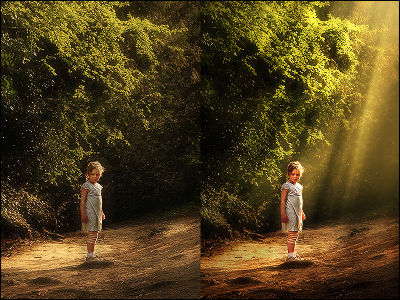Astronomers invent a way to spot AI-created deep fakes using a galaxy measurement tool

By Adejumoke Owolabi
As generative AI becomes more widespread, there is a demand for methods to distinguish fake images (
Want to spot a deepfake? Look for the stars in their eyes | The Royal Astronomical Society
https://ras.ac.uk/news-and-press/news/want-spot-deepfake-look-stars-their-eyes

Astronomers discover technique to spot AI fakes using galaxy-measurement tools | Ars Technica
https://arstechnica.com/information-technology/2024/07/astronomers-discover-technique-to-spot-ai-fakes-using-galaxy-measurement-tools/
Adejumoke Owolabi, a master's student at the University of Hull, working under the supervision of Dr Kevin Pinbread, professor of astrophysics, has presented a new method for detecting deepfake images by analyzing the reflections of the human eye. The research was presented at the 2024 National Astronomy Conference in the UK in the third week of July 2024.
The deepfake detection technology presented by Owolabi and his team is based on the simple principle that a pair of eyes illuminated by the same light source will usually show similarly shaped reflections of light in each eye.
The photo below shows both human eyes, and you can see that each eye reflects light in almost the same way.

Owolabi explained that he developed a tool to automatically detect the reflection of light from the left and right eyeballs, and compared the similarity of the reflection of light seen in the left and right eyeballs by applying the morphological characteristics of the reflection as an index. And in deep fakes, the shape of the reflection of light from the left and right eyeballs is often different.
Below are the left and right eyeballs of a deep fake. You can see that the way light is reflected is clearly different between the left and right eyeballs.

Owolabi's tool uses a technique used in astronomy to quantify and compare how light is reflected by the eye. Specifically,
'We compared the method of measuring the shape of light reflections in the eye with a technique used to measure the shape of galaxies in telescope images,' said Dr Pinbred. 'To measure a galaxy's shape, we analyse the distribution of light to analyse things like whether it has a compact centre, whether it's symmetrical, how smooth it is, etc.'
The team also investigated a method that uses CAS parameters, another tool used to measure the distribution of light in galaxies, but this method was not very effective at detecting deep fakes.

Regarding the technology to distinguish deep fakes from the way light reflects off the eyeball, technology media Ars Technica points out that 'this method may not work if the AI model evolves to reproduce physically accurate eye reflections. Also, to use this technique, high-quality images that allow the eyeball to be clearly seen are required.'
In addition, even if the photo is real, there is a risk of false positives because the reflection of light on the eyeball may not match between the left and right eyes due to differences in lighting conditions and post-processing techniques. However, Ars Technica pointed out that analyzing the reflection of light on the eyeball may be more useful than methods that detect deep fakes based on the consistency of hair texture, anatomical structure, skin, and background.
'There will be false positives and false negatives, so it won't be able to spot everything accurately,' Dr Pinbread said, but added, 'This method provides a basic plan of attack in the arms race to detect deepfakes.'
Related Posts:







